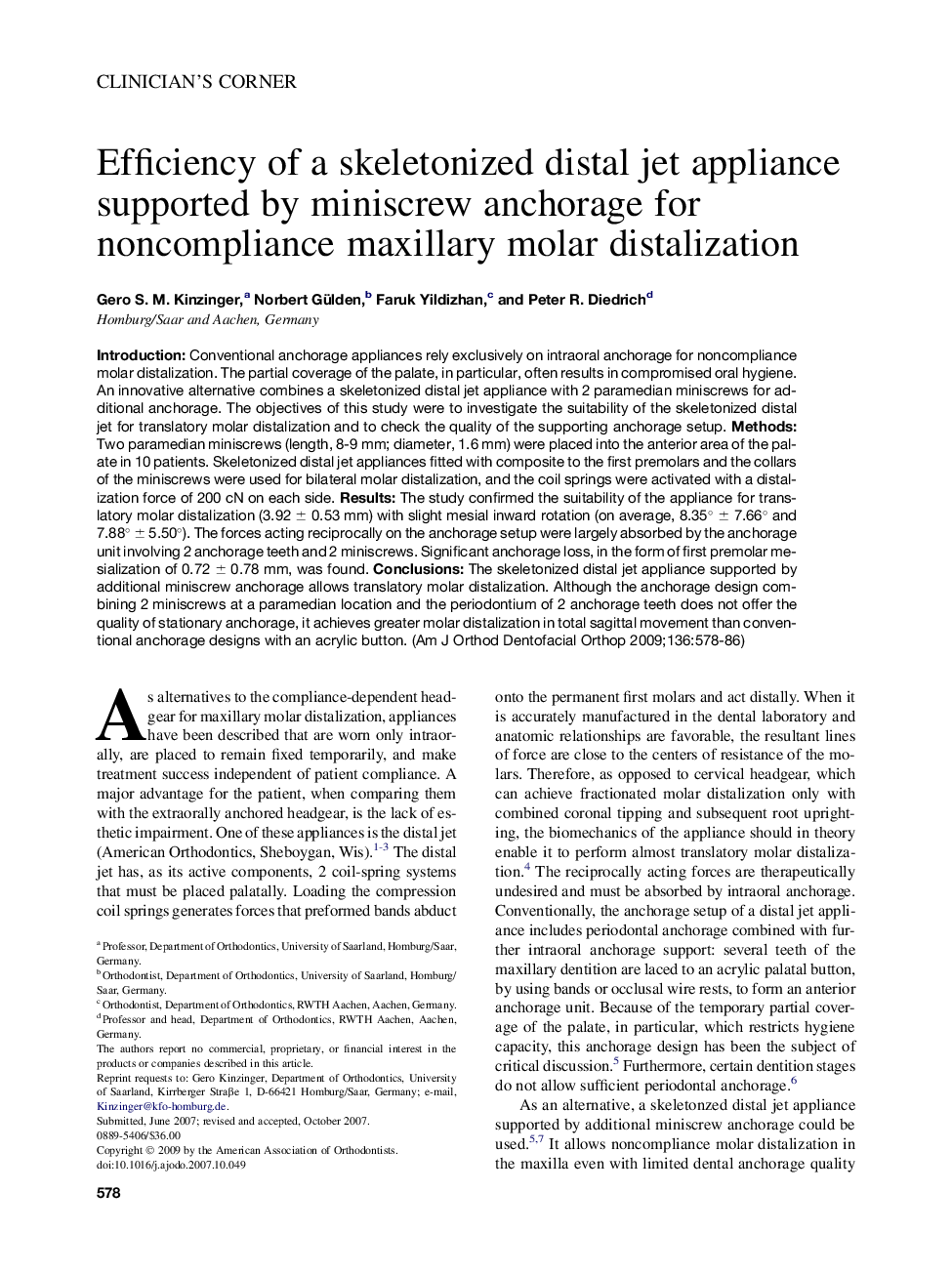| Article ID | Journal | Published Year | Pages | File Type |
|---|---|---|---|---|
| 3119849 | American Journal of Orthodontics and Dentofacial Orthopedics | 2009 | 9 Pages |
IntroductionConventional anchorage appliances rely exclusively on intraoral anchorage for noncompliance molar distalization. The partial coverage of the palate, in particular, often results in compromised oral hygiene. An innovative alternative combines a skeletonized distal jet appliance with 2 paramedian miniscrews for additional anchorage. The objectives of this study were to investigate the suitability of the skeletonized distal jet for translatory molar distalization and to check the quality of the supporting anchorage setup.MethodsTwo paramedian miniscrews (length, 8-9 mm; diameter, 1.6 mm) were placed into the anterior area of the palate in 10 patients. Skeletonized distal jet appliances fitted with composite to the first premolars and the collars of the miniscrews were used for bilateral molar distalization, and the coil springs were activated with a distalization force of 200 cN on each side.ResultsThe study confirmed the suitability of the appliance for translatory molar distalization (3.92 ± 0.53 mm) with slight mesial inward rotation (on average, 8.35° ± 7.66° and 7.88° ± 5.50°). The forces acting reciprocally on the anchorage setup were largely absorbed by the anchorage unit involving 2 anchorage teeth and 2 miniscrews. Significant anchorage loss, in the form of first premolar mesialization of 0.72 ± 0.78 mm, was found.ConclusionsThe skeletonized distal jet appliance supported by additional miniscrew anchorage allows translatory molar distalization. Although the anchorage design combining 2 miniscrews at a paramedian location and the periodontium of 2 anchorage teeth does not offer the quality of stationary anchorage, it achieves greater molar distalization in total sagittal movement than conventional anchorage designs with an acrylic button.
